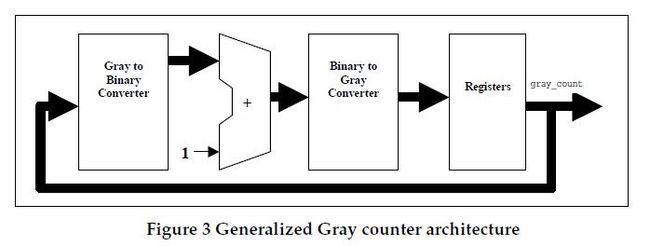- 1052. 爱生气的书店老板
xiaolin0333
#滑动窗口算法滑动窗口
【题目】:1052.爱生气的书店老板classSolution{public:intmaxSatisfied(vector&customers,vector&grumpy,intminutes){intmaxAddCount=0;//在minutes长度内,还能增加的最大顾客满意人数intcurAddCount=0;//当前窗口内还能增加的顾客满意数intcurCount=0;//原本有的顾客满意
- 用Python实现概率语言模型(2-元语法模型)
peanutwang
python语言模型
首先构造一个语料库,由6句话组成,每句话3个字。corpus='她很香她很菜她很好他很菜他很好菜很好'.split()构造一个字典,存储一元的字数Count1={}遍历语料库,把每个字出现的次数存储在字典中。forsentenceincorpus:forwordinsentence:ifwordinCount1:Count1[word]+=1#如果word在字典中存在else:Count1[wor
- Psutil模块
-MaoKe-
Python模块python
文章目录Psutil模块一、模块介绍二、模块下载三、模块导入四、模块函数1.psutil.cpu_percent()2.psutil.cpu_count()3.psutil.cpu_times()4.psutil.swap_memory()5.psutil.virtual_memory()6.psutil.disk_usage()7.psutil.disk_partitions()8.psutil
- 已完结:C语言经典100题目(满足所有C程序基础)
ChillCoding
c语言开发语言
C练习实例1-组无重复数字的数题目:有1、2、3、4四个数字,能组成多少个互不相同且无重复数字的三位数?都是多少?程序分析:可填在百位、十位、个位的数字都是1、2、3、4,组成所有的排列后再去掉不满足条件的排列。#include#defineMAX5intmain(){inti,j,k;intcount=0;for(inti=1;i#defineLAC100000//将10w定义为一个常用数int
- python元组+字典
学IT的那些年
python
#案例#访问元组#aTuple=(23,35,56,34,11,21)#下标为2#print(aTuple[2])#索引值不存在#print(aTuple[20])#查询个数#aTuple=('b','c','d','e','f','g')#print(aTuple.count('d'))#查询索引#print(aTuple.index('d',0,4))#无对应元素#print(aTuple.i
- Python的元组和字典
汤姆666
测试工具测试软件测试python
1.元组Python的元组与列表类似,不同之处在于元组的元素不能修改。元组使用小括号,列表使用方括号。格式:变量名=(,,,,)案例aTuple=(23,35,56,34,11,21)1.1访问元组通过索引取数据索引值存在aTuple=(23,35,56,34,11,21)print(aTuple[2])结果561.2查询个数count查询出现的个数aTuple=('b','c','d','e',
- Prometheus监控数据类型
xianyuLuo.
kubernetesprometheus
Prometheus监控数据类型类型特点常用命名常用函数Counter计数器,只增不减*_total*_sum*_countrate:求增长率topk:Top前N的信息Gauge反映当前状态,可增可减一般不带后缀直接使用指标,表示当前状态delta:可以获取样本在一段时间返回内的变化情况predict_linear:数据的变化趋势进行预测Histogram/Summary数据分区间计算带指标的总和
- 数据库的DQL(3)
比特知识工坊
MySQL专栏数据库
数据库的DQL(3)分组查询在MySQL中,groupby关键字可以根据一个或多个字段对查询结果进行分组groupby字段名1.分组函数有时也叫聚合函数count():查询表中的记录数量avg():求平均值sum():求和max():求最大值min():求最小值案例1:mysql>selectcount(empno),sum(sal),avg(sal)fromemp;+--------------
- 【DAY.2】PHP数据结构与算法_排序_冒泡排序
我是妖怪_
天天学习冒泡排序算法php
思路分析:循环逐个对比,从第一个开始,与下一个数字进行对比,若大于则交换位置,每循环一遍将最大的一个排到最后。(依次比较相邻的元素,两两比较,就可以最终将最大(小)的元素调整到最顶端、次顶端、、、)$arr=array(3,2,5,6,1,8,4,9);functionbubble_sort($arr){$len=count($arr);//判断数组是否为空if($len$arr[$i+1]){$
- aws s3仅允许cloudfront访问_配置跨账户S3存储桶的访问
weixin_39839478
awsawss3查看accesskeysecretkey我们无法刷新此账户的凭据
【Domain1的组织复杂性设计(DesignforOrganizationalComplexity)】——-配置跨账户S3存储桶的访问(CrossAccountS3BucketConfiguration)Hello大家好,欢迎回来,我们今天的课程内容是跨账户S3存储桶的访问。当前,在很多组织中,应用跨账户S3存储桶访问的架构组成是非常普遍的,同样,对于AWSSAP认证考试,掌握跨账户存储桶的访问
- STLG_02_32_SQL Server常用函数
魔都天健
数据库mssql
SQLServer提供了丰富的内置函数,用于处理数据、执行计算、格式化输出、日期操作等。以下是一些常用的SQLServer函数,按类别进行分类:1.聚合函数这些函数用于对一组值进行计算并返回单个值。COUNT():计算行数。SELECTCOUNT(*)FROMEmployees;SUM():计算数值列的总和。SELECTSUM(Quantity)FROMOrders;AVG():计算数值列的平均值
- python期末题库和答案,python 期末卷及答案
www55597
人工智能
大家好,给大家分享一下python期末题库和答案,很多人还不知道这一点。下面详细解释一下。现在让我们来看看!6.foriinrange(2,n):ifn%i==0:breakifi==n-1:print('是素数')else:print('不是素数')7.'abcabcabc'.count('abc')的值为__3__。8.对于有else子句的for循环和while循环,但循环因循环条件不成立而自
- 旋转编码器驱动-标准库和HAL库
末时清
单片机stm32嵌入式硬件
一、标准库Encoder.c-标准库#include"stm32f10x.h"//Deviceheader#include"Delay.h"int8_tEncoder_Count;/***函数:旋转编码器初始化*参数:无*返回值:无*/voidEncoder_Init(void){/*开启时钟*/RCC_APB2PeriphClockCmd(RCC_APB2Periph_GPIOB,ENABLE)
- Windows 窗口置顶工具推荐 如何始终置顶窗口 窗口前置 窗口固定 窗口钉在桌面 始终保持在其他窗口前端 在其他窗口之上 PowerToys MouseInc
七星关雎
Windows疑难杂症Windowswindows开源软件
工具一:微软PowerToysReleases·microsoft/PowerToys·GitHubWindowssystemutilitiestomaximizeproductivity.Contributetomicrosoft/PowerToysdevelopmentbycreatinganaccountonGitHub.https://github.com/microsoft/PowerT
- 国产编辑器EverEdit - 合并行
彩虹小黑馬
妙用编辑器编辑器EverEditEmEditornotepad++
1合并行1.1应用场景 在编写代码或其他场景下,有时需要把多行的内容缩减成一行,或者纯粹减少行数进行合并,比如:下面的字典的定义,每个元素占了一行,有点浪费,现在需要把它们缩减行数。typeDict={"姓名":"name","出生日期":"passport_dob","职位":"job","手机号":"phone_number","身份证":"ssn","国家":"country","地址":
- HTML<blockquote>标签
新生派
html前端
例子引用自其他来源的部分:For50years,WWFhasbeenprotectingthefutureofnature.Theworld'sleadingconservationorganization,WWFworksin100countriesandissupportedby1.2millionmembersintheUnitedStatesandcloseto5millionglobal
- 在Linux中修改vm.max_map_count参数的步骤
行路见知
linux运维
使用docker安装es时报错,Elasticsearch需要更多的虚拟内存区域ERROR:[1]bootstrapchecksfailed.Youmustaddressthepointsdescribedinthefollowing[1]linesbeforestartingElasticsearch.bootstrapcheckfailure[1]of[1]:maxvirtualmemorya
- 存储过程报错ORA-01031 权限不足 ORA-00942 解决办法
学无止境的小一
oracledba数据库
昨天有客户在执行存储过程的时候出现了报错,具体报错信息如下存储过程中的内容很简单,就是普通的select,update语句。但是操作的表是在另一个用户下。并且用户表示在外部单独执行这条语句是可以执行的。这是oracle的一个经典案例。下面在测试环境来模拟一下此问题。测试环境创建用户并赋予dba权限SYS@orcl>createuserpro_testidentifiedbytestaccountu
- Go 语言 map源码分析及图解(一)(查找、写入、删除K/V值)
Mr.禾
Gogolang数据结构源码分析图解
文章目录map基本结构hash值定位K/V值map创建计算桶的数量申请buckets内存空间tophash标记位介绍查找K/V值(mapaccess1)写入K/V值(mapassign)删除K/V值(mapdelete)map扩容的源码分析见下一节map基本结构hmap是map的核心数据结构:typehmapstruct{countint//当前的元素个数flagsuint8Buint8//桶的数
- leetcode 6058. 统计打字方案数java
奔跑的废柴
LeetCodeleetcodejava动态规划
https://leetcode-cn.com/problems/count-number-of-texts/classSolution{//int[]buttons={0,0,3,3,3,3,3,4,3,4};longres=1;intmod=1000000007;long[][]dp;//dp[0]是3字符可能性的,dp[1]是4字符可能性的。dp[][i]表面长度为i的重复字符串的信息种类数
- 创建您的第一个Angular应用:实现路由
cunjie3951
pythonjavavuehtmllinuxViewUI
在继续本教程之前,最好总结一下到目前为止已经完成的所有工作,以免造成任何混乱和错误。如果您错过了前三篇教程中的任何步骤,则最好返回并进行必要的更改。在第二个教程中,我们创建了三个不同的文件,分别名为country.ts,country-data.ts和country.service.ts。country.ts文件用于存储Country类定义,因此我们可以将其导入到其他文件中。country-dat
- 【WRF模拟】WRF运行时进程数限制的原因及报错解决方案
WW、forever
WRF模型原理及应用WRF
目录WRF运行时进程数限制的原因网格块的最小尺寸要求嵌套域的尺寸和分辨率进程数与网格划分的关系案例1:四层嵌套错误:ERROR:ReducetheMPIrankcount,orredistributethetasks解决方法参考WRF运行时进程数限制的原因在进行wrf模拟时,若内层网格分辨率较高,模拟时间较久,可适当增加运行内核数,但如何确定合适的内核数呢?太高会导致模型报错,太低又会增加模型运行
- 消失的数去哪里了
java
大家好,我是大圣,最近消失了很长一段时间了,之前答应粉丝要更新的文章也没有按时更新。其实我这段时间去闭关修炼去了,现在满血归来啦,之前答应粉丝的文章都会陆续发出来的。消失的Count去哪了今天给大家分享一个面试经常问到的一个多线程问题,大家直接看下面的代码。代码案例publicclassCounter{privateintcount=0;publicsynchronizedvoidincremen
- flutter鸿蒙版本mvvm架构思想原理
淼学派对
flutter_鸿蒙nextflutterharmonyos架构
目录写在前面1.整体架构概述2.各文件详细讲解2.1.main.dart2.2.CounterViewModel.dart2.3.MyHomePage.dart2.4.Model.dart3.MVVM架构思想分析3.1.分离关注点3.2.数据绑定3.3.可维护性和可测试性写在最后写在前面在Flutter中实现MVVM(Model-View-ViewModel)架构是为了将UI(视图)与业务逻辑(模
- Vue 3 中的 toRef 和 toRefs:区别与使用场景
小黄编程快乐屋
vue.jsjavascript前端
1.什么是toRef?toRef是一个用于将响应式对象的某个属性转换为ref的函数。它的主要作用是保持单个属性的响应性,即使该属性是从一个响应式对象中提取出来的。使用场景当你只需要从响应式对象中提取一个属性,并希望保持其响应性时,可以使用toRef。import{reactive,toRef}from'vue';conststate=reactive({count:0,name:'Vue'});/
- 2266. 统计打字方案数
咔咔咔的
leetcodec++
2266.统计打字方案数题目链接:2266.统计打字方案数代码如下:classSolution{public:intcountTexts(stringpressedKeys){vectorf(pressedKeys.size()+1);f[0]=f[1]=1;for(inti=1;i=2&&pressedKeys[i]==pressedKeys[i-2]){f[i+1]+=f[i-2];}if(i
- el-tree树结构在名称后面添加其他文字
风吹头皮凉
vue.jsjavascript前端
//在el-tree中使用render-content插槽来展示文件大小exportdefault{data(){return{treeData:{loading:false,data:[{id:1,name:'文件1',fileSize:391055,fileCount:1,children:[]},//更多节点数据...]},defaultProps:{children:'children',
- sql查询中的包含【被包含】、模糊查询
大鳥
sql
在mysql中提供了like的关键词可用于模糊查询,也可理解为某些指定字段包含在表中的的查询selectcount(*)frommysqlb_clientwherenamelike'%庆农%';可查询出在name字段下所有包含‘庆农’字样的记录;还有一种情况是我们查询的表中的字段被包含在我们指定的条件中,第一种方式我们可以使用关键词IN,配合where条件查询:selectcount(*)from
- 一文帮你搞懂flink中窗口的分类(一)
知否&知否
flink中窗口及其函数分类flink大数据
Window可以分成两类:CountWindow:按照指定的数据条数生成一个Window,与时间无关。滚动计数窗口,每隔N条数据,统计前N条数据滑动计数窗口,每隔N条数据,统计前M条数据TimeWindow:按照时间生成Window。(重点)滚动时间窗口,每隔N时间,统计前N时间范围内的数据,窗口长度N,滑动距离N滑动时间窗口,每隔N时间,统计前M时间范围内的数据,窗口长度M,滑动距离N还有一种特
- 避免SSH超时自动断开
@comefly
SSHssh运维测试工具
文章目录前言前言平时我们通过终端连接服务器时,当鼠标和键盘长时间不操作,服务器就会自动断开连接,也就是SSH超时断开。下面有几种方法可以避免超时断开连接:方法一1、依赖ssh客户端定时发送心跳。putty、SecureCRT、XShell都有这个功能,但是并不保险。配置服务器,修改/etc/ssh/ssh_config配置文件,修改或添加ClientAliveCountMax(单位为分钟)Serv
- Enum 枚举
120153216
enum枚举
原文地址:http://www.cnblogs.com/Kavlez/p/4268601.html Enumeration
于Java 1.5增加的enum type...enum type是由一组固定的常量组成的类型,比如四个季节、扑克花色。在出现enum type之前,通常用一组int常量表示枚举类型。比如这样:
public static final int APPLE_FUJI = 0
- Java8简明教程
bijian1013
javajdk1.8
Java 8已于2014年3月18日正式发布了,新版本带来了诸多改进,包括Lambda表达式、Streams、日期时间API等等。本文就带你领略Java 8的全新特性。
一.允许在接口中有默认方法实现
Java 8 允许我们使用default关键字,为接口声明添
- Oracle表维护 快速备份删除数据
cuisuqiang
oracle索引快速备份删除
我知道oracle表分区,不过那是数据库设计阶段的事情,目前是远水解不了近渴。
当前的数据库表,要求保留一个月数据,且表存在大量录入更新,不存在程序删除。
为了解决频繁查询和更新的瓶颈,我在oracle内根据需要创建了索引。但是随着数据量的增加,一个半月数据就要超千万,此时就算有索引,对高并发的查询和更新来说,让然有所拖累。
为了解决这个问题,我一般一个月会进行一次数据库维护,主要工作就是备
- java多态内存分析
麦田的设计者
java内存分析多态原理接口和抽象类
“ 时针如果可以回头,熟悉那张脸,重温嬉戏这乐园,墙壁的松脱涂鸦已经褪色才明白存在的价值归于记忆。街角小店尚存在吗?这大时代会不会牵挂,过去现在花开怎么会等待。
但有种意外不管痛不痛都有伤害,光阴远远离开,那笑声徘徊与脑海。但这一秒可笑不再可爱,当天心
- Xshell实现Windows上传文件到Linux主机
被触发
windows
经常有这样的需求,我们在Windows下载的软件包,如何上传到远程Linux主机上?还有如何从Linux主机下载软件包到Windows下;之前我的做法现在看来好笨好繁琐,不过也达到了目的,笨人有本方法嘛;
我是怎么操作的:
1、打开一台本地Linux虚拟机,使用mount 挂载Windows的共享文件夹到Linux上,然后拷贝数据到Linux虚拟机里面;(经常第一步都不顺利,无法挂载Windo
- 类的加载ClassLoader
肆无忌惮_
ClassLoader
类加载器ClassLoader是用来将java的类加载到虚拟机中,类加载器负责读取class字节文件到内存中,并将它转为Class的对象(类对象),通过此实例的 newInstance()方法就可以创建出该类的一个对象。
其中重要的方法为findClass(String name)。
如何写一个自己的类加载器呢?
首先写一个便于测试的类Student
- html5写的玫瑰花
知了ing
html5
<html>
<head>
<title>I Love You!</title>
<meta charset="utf-8" />
</head>
<body>
<canvas id="c"></canvas>
- google的ConcurrentLinkedHashmap源代码解析
矮蛋蛋
LRU
原文地址:
http://janeky.iteye.com/blog/1534352
简述
ConcurrentLinkedHashMap 是google团队提供的一个容器。它有什么用呢?其实它本身是对
ConcurrentHashMap的封装,可以用来实现一个基于LRU策略的缓存。详细介绍可以参见
http://code.google.com/p/concurrentlinke
- webservice获取访问服务的ip地址
alleni123
webservice
1. 首先注入javax.xml.ws.WebServiceContext,
@Resource
private WebServiceContext context;
2. 在方法中获取交换请求的对象。
javax.xml.ws.handler.MessageContext mc=context.getMessageContext();
com.sun.net.http
- 菜鸟的java基础提升之道——————>是否值得拥有
百合不是茶
1,c++,java是面向对象编程的语言,将万事万物都看成是对象;java做一件事情关注的是人物,java是c++继承过来的,java没有直接更改地址的权限但是可以通过引用来传值操作地址,java也没有c++中繁琐的操作,java以其优越的可移植型,平台的安全型,高效性赢得了广泛的认同,全世界越来越多的人去学习java,我也是其中的一员
java组成:
- 通过修改Linux服务自动启动指定应用程序
bijian1013
linux
Linux中修改系统服务的命令是chkconfig (check config),命令的详细解释如下: chkconfig
功能说明:检查,设置系统的各种服务。
语 法:chkconfig [ -- add][ -- del][ -- list][系统服务] 或 chkconfig [ -- level <</SPAN>
- spring拦截器的一个简单实例
bijian1013
javaspring拦截器Interceptor
Purview接口
package aop;
public interface Purview {
void checkLogin();
}
Purview接口的实现类PurviesImpl.java
package aop;
public class PurviewImpl implements Purview {
public void check
- [Velocity二]自定义Velocity指令
bit1129
velocity
什么是Velocity指令
在Velocity中,#set,#if, #foreach, #elseif, #parse等,以#开头的称之为指令,Velocity内置的这些指令可以用来做赋值,条件判断,循环控制等脚本语言必备的逻辑控制等语句,Velocity的指令是可扩展的,即用户可以根据实际的需要自定义Velocity指令
自定义指令(Directive)的一般步骤
&nbs
- 【Hive十】Programming Hive学习笔记
bit1129
programming
第二章 Getting Started
1.Hive最大的局限性是什么?一是不支持行级别的增删改(insert, delete, update)二是查询性能非常差(基于Hadoop MapReduce),不适合延迟小的交互式任务三是不支持事务2. Hive MetaStore是干什么的?Hive persists table schemas and other system metadata.
- nginx有选择性进行限制
ronin47
nginx 动静 限制
http {
limit_conn_zone $binary_remote_addr zone=addr:10m;
limit_req_zone $binary_remote_addr zone=one:10m rate=5r/s;...
server {...
location ~.*\.(gif|png|css|js|icon)$ {
- java-4.-在二元树中找出和为某一值的所有路径 .
bylijinnan
java
/*
* 0.use a TwoWayLinkedList to store the path.when the node can't be path,you should/can delete it.
* 1.curSum==exceptedSum:if the lastNode is TreeNode,printPath();delete the node otherwise
- Netty学习笔记
bylijinnan
javanetty
本文是阅读以下两篇文章时:
http://seeallhearall.blogspot.com/2012/05/netty-tutorial-part-1-introduction-to.html
http://seeallhearall.blogspot.com/2012/06/netty-tutorial-part-15-on-channel.html
我的一些笔记
===
- js获取项目路径
cngolon
js
//js获取项目根路径,如: http://localhost:8083/uimcardprj
function getRootPath(){
//获取当前网址,如: http://localhost:8083/uimcardprj/share/meun.jsp
var curWwwPath=window.document.locati
- oracle 的性能优化
cuishikuan
oracleSQL Server
在网上搜索了一些Oracle性能优化的文章,为了更加深层次的巩固[边写边记],也为了可以随时查看,所以发表这篇文章。
1.ORACLE采用自下而上的顺序解析WHERE子句,根据这个原理,表之间的连接必须写在其他WHERE条件之前,那些可以过滤掉最大数量记录的条件必须写在WHERE子句的末尾。(这点本人曾经做过实例验证过,的确如此哦!
- Shell变量和数组使用详解
daizj
linuxshell变量数组
Shell 变量
定义变量时,变量名不加美元符号($,PHP语言中变量需要),如:
your_name="w3cschool.cc"
注意,变量名和等号之间不能有空格,这可能和你熟悉的所有编程语言都不一样。同时,变量名的命名须遵循如下规则:
首个字符必须为字母(a-z,A-Z)。
中间不能有空格,可以使用下划线(_)。
不能使用标点符号。
不能使用ba
- 编程中的一些概念,KISS、DRY、MVC、OOP、REST
dcj3sjt126com
REST
KISS、DRY、MVC、OOP、REST (1)KISS是指Keep It Simple,Stupid(摘自wikipedia),指设计时要坚持简约原则,避免不必要的复杂化。 (2)DRY是指Don't Repeat Yourself(摘自wikipedia),特指在程序设计以及计算中避免重复代码,因为这样会降低灵活性、简洁性,并且可能导致代码之间的矛盾。 (3)OOP 即Object-Orie
- [Android]设置Activity为全屏显示的两种方法
dcj3sjt126com
Activity
1. 方法1:AndroidManifest.xml 里,Activity的 android:theme 指定为" @android:style/Theme.NoTitleBar.Fullscreen" 示例: <application
- solrcloud 部署方式比较
eksliang
solrCloud
solrcloud 的部署其实有两种方式可选,那么我们在实践开发中应该怎样选择呢? 第一种:当启动solr服务器时,内嵌的启动一个Zookeeper服务器,然后将这些内嵌的Zookeeper服务器组成一个集群。 第二种:将Zookeeper服务器独立的配置一个集群,然后将solr交给Zookeeper进行管理
谈谈第一种:每启动一个solr服务器就内嵌的启动一个Zoo
- Java synchronized关键字详解
gqdy365
synchronized
转载自:http://www.cnblogs.com/mengdd/archive/2013/02/16/2913806.html
多线程的同步机制对资源进行加锁,使得在同一个时间,只有一个线程可以进行操作,同步用以解决多个线程同时访问时可能出现的问题。
同步机制可以使用synchronized关键字实现。
当synchronized关键字修饰一个方法的时候,该方法叫做同步方法。
当s
- js实现登录时记住用户名
hw1287789687
记住我记住密码cookie记住用户名记住账号
在页面中如何获取cookie值呢?
如果是JSP的话,可以通过servlet的对象request 获取cookie,可以
参考:http://hw1287789687.iteye.com/blog/2050040
如果要求登录页面是html呢?html页面中如何获取cookie呢?
直接上代码了
页面:loginInput.html
代码:
<!DOCTYPE html PUB
- 开发者必备的 Chrome 扩展
justjavac
chrome
Firebug:不用多介绍了吧https://chrome.google.com/webstore/detail/bmagokdooijbeehmkpknfglimnifench
ChromeSnifferPlus:Chrome 探测器,可以探测正在使用的开源软件或者 js 类库https://chrome.google.com/webstore/detail/chrome-sniffer-pl
- 算法机试题
李亚飞
java算法机试题
在面试机试时,遇到一个算法题,当时没能写出来,最后是同学帮忙解决的。
这道题大致意思是:输入一个数,比如4,。这时会输出:
&n
- 正确配置Linux系统ulimit值
字符串
ulimit
在Linux下面部 署应用的时候,有时候会遇上Socket/File: Can’t open so many files的问题;这个值也会影响服务器的最大并发数,其实Linux是有文件句柄限制的,而且Linux默认不是很高,一般都是1024,生产服务器用 其实很容易就达到这个数量。下面说的是,如何通过正解配置来改正这个系统默认值。因为这个问题是我配置Nginx+php5时遇到了,所以我将这篇归纳进
- hibernate调用返回游标的存储过程
Supanccy2013
javaDAOoracleHibernatejdbc
注:原创作品,转载请注明出处。
上篇博文介绍的是hibernate调用返回单值的存储过程,本片博文说的是hibernate调用返回游标的存储过程。
此此扁博文的存储过程的功能相当于是jdbc调用select 的作用。
1,创建oracle中的包,并在该包中创建的游标类型。
---创建oracle的程
- Spring 4.2新特性-更简单的Application Event
wiselyman
application
1.1 Application Event
Spring 4.1的写法请参考10点睛Spring4.1-Application Event
请对比10点睛Spring4.1-Application Event
使用一个@EventListener取代了实现ApplicationListener接口,使耦合度降低;
1.2 示例
包依赖
<p
